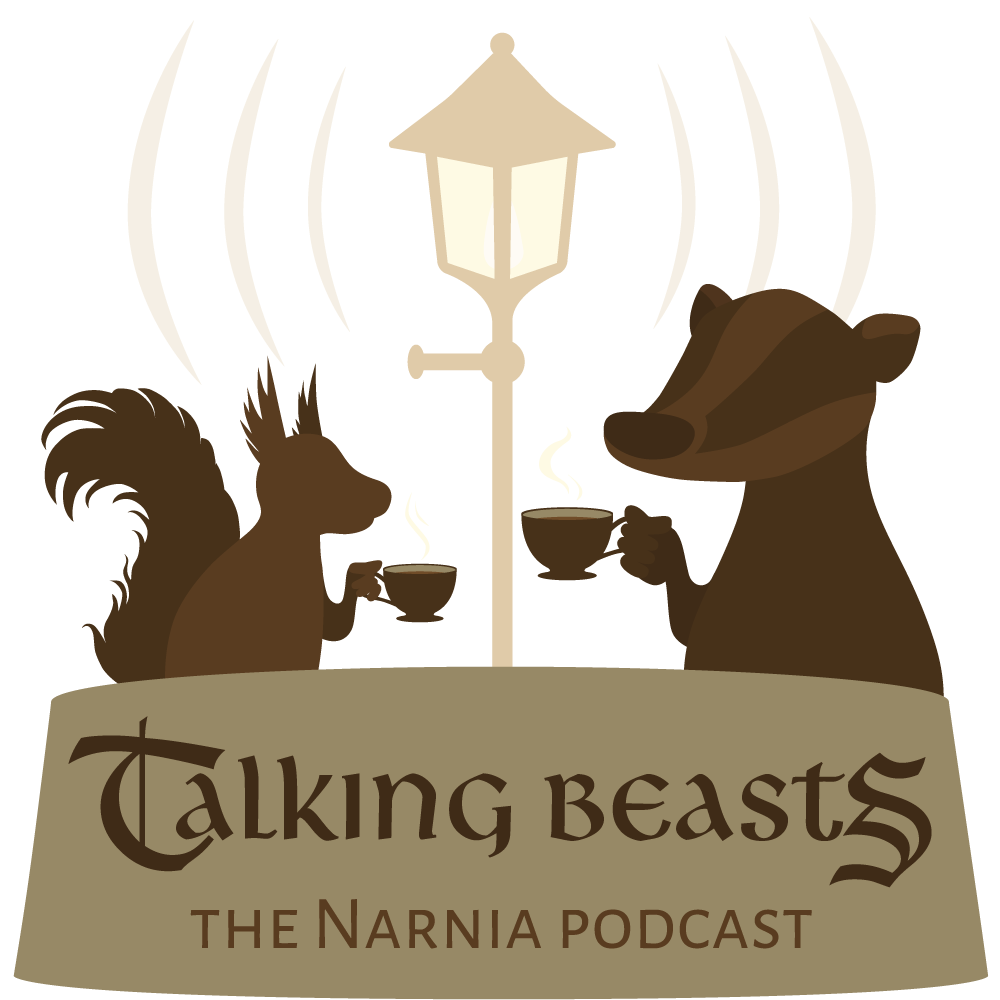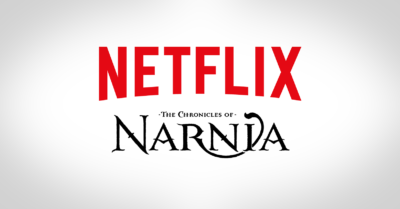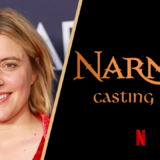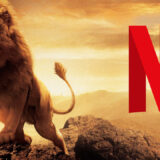Interview with Howard Berger and Dean Wright
ComingSoon.net also interviewed creature supervisor Howard Berger and visual effects supervisor Dean Wright, who talk about revisiting creatures from the first film and redeveloping them for Prince Caspian, and bringing the characters of Narnia to life. We’ve done another transcript for you. Listen to the full audio interview here.
Interview with Howard Berger and Dean Wright
CS: Howard, what did you do in this that will compare with James’ character?
HB: Oh yes, Mr. McAvoy, the great Jimmy Mac. Actually, it’s one of the first characters that we did on this show, which was Trumpkin the Dwarf, who is played by Peter Dinklage. And to me he’s our Tumnus. There’s just something about Peter Dinklage. I say he has dreamy eyes, and he does; they’re very expressive. And he is the James McAvoy of this film, I feel. He’s like the heart, you know. And we were able to redevelop the dwarfs for this film. On the first film I just wasn’t really happy with what we ended up with, and same with the performers – they were just little people that we had pulled from Thailand, and India, and they weren’t actors, they were just little. And this time, we really talked about it with Andrew, and said we really should cast dwarf actors. Peter Dinklage, who’s probably the best there is – and then we got Warwick [Davis] to play Nikabrik, so we really got to develop some beautiful makeups. Tami Lane, who co-won the Oscar with me, does Peter Dinklage’s makeup, and then Sara Rubano handles Nikabrik – Warwick’s makeup. They’re just really beautiful makeups.
It’s interesting – you look at Peter Dinklage, and it looks minimal, but he’s got a full gelatine nose on, and these big ears and all hair where we shaved Peter’s head entirely, which was great. And then Warwick has a really big, big makeup: a full gelatine face makeup and ears and a lot of hair work. It’s just really nice to be able to revisit characters like that, especially ones that I just felt were not so great in the first film and now they’re really outstanding. I think those two characters are really the heart and soul of this film.
CS: How difficult was the casting process for finding the dwarfs?
HB: I think it was relatively difficult. Andrew really didn’t have a lot of choice.
CS: I was just going to say, I can’t imagine that there was a lot.
HB: Yeah, there’s not.
DW: That are high quality actors.
HB: High quality, exactly. At first they thought, well, we can go to theatre, and see who we can find. But Peter Dinklage was always the first idea. And we were designing – prior to Peter getting cast – around Peter’s looks. And then it just worked out perfectly. Hoping and praying … they had Peter, then they didn’t, then they did, then they didn’t. Then they finally got him at the eleventh hour.
CS: Oh, why?
DW: Deal-making. I mean we were going back and forth … are we going to end up going the “hobbit route”, and casting a full-size actor, doing the makeup and then having to scale them down? We didn’t want to do that because this movie is going to be big enough as it is with visual effects. If Howard can do it, it’s great.
HB: And there’s so much interaction between the kids and Trumpkin; I mean, he’s in so many scenes. But Peter just brings so much to the table. And it’s cool for Peter too. The thing is, on the first film, Tami and myself and my crew became so close with James, and on this one it’s the same thing. We’ve really become so close. I mean, they spend practically the entire day with us. We start at three in the morning and then they go home when we go home.
DW: Peter’s great too – he’s very funny.
CS: Caspian is set 100 years or 80 years later …
DW: It’s actually 1300 years.
CS: Oh, 1300. So that obviously has a whole different look and feel …
DW: It’s dramatically different, actually. It’s much more wild, and I think the whole theme of this film has a much grittier tone to it, and it’s reflected in both the production design, and the character design, and ultimately it will impact all the visual effects. Basically the kids went back to London, they’ve been there for a year, and as they get sucked back to Narnia this time, they’re expecting to find the same place that they left. Cair Paravel – they stumble upon it (the ruins of it) and it’s been destroyed in a battle. Plants and vines have overgrown it all, and it’s like, what happened, what went wrong? It’s through the course of the story that they find out after they left, the Telmarines came in and wiped out all the Narnians, and they feel very responsible for that, even though it wasn’t by their choice. They have to then help Prince Caspian and the remaining ragtag-bag of Narnian refugees (slash underground resistance movement) to help take back Narnia for the creatures, and bring peace to the land.
CS: So it’s less of a fantasy world, and more of a medieval kind of …
DW: Yeah, it is. And in the way of castles and all that, they definitely looked to a sort of Spanish influence, and Isis (the costume designer) looked at it greatly for all the costume and armour. And I know in terms of the characters too, Howard spent a lot of time with his gang, and his partner Greg Nicotero spent a lot of time designing the characters and giving a lot more variance to the types of characters, making them different ages. For us it makes a lot more work because we have to then replicate that times fifty, which means we have to keep creating more and more different types to make it all look correct.
CS: Particularly because of the spiritual overtones that were emphasised in the first film – how much does that, if at all, impact the practical design of characters or the work that you do? Or is it a matter of literally creating a character?
HB: When we designed some of the Narnians – I haven’t taken any of that into consideration really …
DW: I think it’s all about the book, right?
HB: Yeah, it is, and that book is what the source material is. And on the first film it was the source material, and trying to come up with things that Andrew imagined them to be when he was a child – that was really it. This is kind of the same way. Andrew’s a great, great source of inspiration and information and direction.
DW: But he does let you go off and he’ll give you a chance to go create something different …
HB: He’s not controlling. He’s a perfect director, to tell you the truth, just because he trusts. And once he trusts you – because on the first film we didn’t know each other, and there was a certain amount of holding the reins; of course you should – on this one he’s let the reins go a little bit more, and that’s where we came up with the dwarfs and the satyrs and all that stuff, and we revisited everything.
DW: I really like the design you’re doing on the satyrs, too. On the last film it became a budgetary issue in that Andrew had wanted the satyrs to be fully CG in the first film, and several weeks before we started shooting, all of a sudden we’re like – we can’t afford that, we can’t do that, and … Howard, design something!
HB: So we banged out a bunch of satyrs. But they were makeups, and we just never had enough time to really think it out, you know, and this time we did, and came up with some pretty nice conceptual artwork. I think once it’s all together, it’s going to look really fantastic.
DW: And the goal is to have the creatures that are humanoid look like humanoid, and the ones that aren’t, not. And whether it’s a werewolf or a satyr, they shouldn’t look like a human, and so Howard’s done an amazing job for the upper half, and then we have to put the bottom half there!
HB: And that’s what’s so cool! When I saw The Lion, the Witch and the Wardrobe for the first time – which is when we saw it at the Director’s Guild – when I saw Mr. Tumnus for the very first time with legs, I took this big, deep gasp, because it was so awesome to finally see him done – I’d been so used to seeing James walk around in green pants for months and months and I just let out this big sigh. And I remember one of my kids elbowed me, like, “Dad, shhhh!” But it was so awesome, and it just pulled me into it, and this is going to be the same thing. And as we see footage – because Andrew likes to cut things and show the crew just to get them really enthusiastic – we’ve seen stuff, it’s pretty spectacular, and it’s just really, really exciting.
DW: And he’s definitely upped the bar for all of us, for visual effects. We’re starting out thinking we have 1500 shots. The last film we started at 800 and it grew tremendously. This one we’re starting at 1500, so I don’t know where we’re going to end up. The time is not as long. We’re still shooting, and we have to deliver the film in April for a May release. And we’ve got at least two and three units shooting simultaneously right now, and now we’ve got a miniature unit starting next week, and that’s being done down in New Zealand. So we’ll have crews shooting all over the Czech Republic, another team working basically the opposite ends of the clock … so we’re working 24 hours a day really, so I’ve got to be monitoring that stuff as well as the stuff that we’re shooting. And then before you know it, we’ll have hundreds of shots in the works.
We’ve already started to turn stuff over to the facilities. We’re using a whole new group of companies. We’re based in London this time, because they wanted the film to be considered a British film, so we’ve booked the work at some of the best companies in London, and also we’re working with Weta Digital this time. So between the demands of creating a whole new set of creatures that we have to bring to life, that Howard’s helped us with in terms of creating some looks, and we’ve gone to the companies – like Reepicheep, the mice, and Trufflehunter who’s the badger. There are new beavers and wolves and all that for this film.
And then we’ve got much more environment work. We’ve got this castle. It’s a huge set that we built, an enormous set in Prague, the back lot of Barrandov Studios, but still it’s just the courtyard. And then we’ve got towers, and towers, and towers that go all around it and we’re about to start shooting in a few weeks – I don’t know if you saw the little clip we did, but in this castle raid, gryphons are back, and this time they help carry the kids into battle, and so they swoop in and fly in and around the castle. And so we’ve got sets that’ll just be like one tower, or a couple of towers, or just the back lot set itself, and we’ve got to expand and make it bigger and bigger and make it feel just as real. And so that’s why we’ve gone to the gang at Weta, and Alex Funke and his miniature team that did all the work on Lord of the Rings, because they did just fantastic miniature work and they’re going to help bring it to life.
HB: And regarding all of that, there’s a lot of miniature work that’s being done for this one, way more than the first one.
DW: We only did a little bit of the river crossing stuff, some of the extensions and the big cracking stuff, but this there’s hundreds and hundreds of shots of the castle. And then when you get to the battle, it’s again a big effort. It’s probably going to be, at the end of the day, probably 1600 to 1800 shots in the mail. It may hit 2000, but the studio won’t want that! (Don’t tell them I said that! [laughter]) These are all complex shots. We’ve got shots where we’ve got Isis’s army that she’s wardrobed – but there’s 200 of them, we’ve got to be 5000 or 8000 or whatever. We’ve got Howard’s 100 plus creatures which take eight hours to get ready – six hours between the time they go through you, and wardrobe, and everything. And then we shoot with them for another eight hours, so they have sixteen hour days a lot of times.
HB: I was looking at stuff from the night raid and I just remember seeing all the creatures running with their green legs and I just went, oh man, Dean’s going to have to animate all those legs. That’s hundreds of legs.
DW: Fortunately I have about 1000 of my closest friends that are going to help. [laughter]
HB: That’s right, sitting there at home. Your kids are doing it too. They’re like … [mechanical noises].
DW: Exactly. In fact my kids are going to learn to rotoscope.
HB: They should. Every child should know how to rotoscope! [more laughter]





